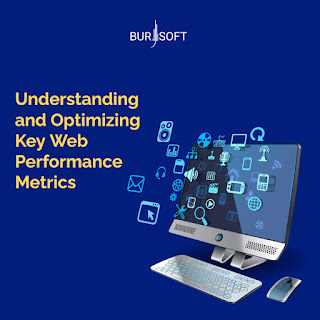Understanding and Optimizing Key Web Performance Metrics
In today's digital landscape, website performance is a critical factor in delivering exceptional user experiences and achieving favorable search engine rankings. Key metrics such as Time to First Byte (TTFB), First Contentful Paint (FCP), and Largest Contentful Paint (LCP) play a pivotal role in assessing and improving website performance. This article will delve into a comprehensive understanding of these metrics, how to measure them, and strategies to optimize each for enhanced web performance.
Time to First Byte (TTFB)
TTFB measures the time it takes for a user's browser to receive the first byte of data from a web server after making an initial request. It encompasses the time spent on server processing, network latency, and data transfer time. A rapid TTFB indicates that the server is responding quickly, resulting in quicker page loading times and improved user experiences.
Measuring TTFB:
TTFB can be measured using web performance monitoring tools, which provide insights into server response times and network latency.
Web development browsers' developer tools, such as Chrome DevTools, also offer TTFB measurements as part of their network performance analysis.
Improving TTFB:
Optimizing server response times by streamlining code, database queries, and server configurations.Implementing content delivery networks (CDNs) to reduce network latency by serving content from geographically distributed servers closer to users.
First Contentful Paint (FCP)
FCP signifies the moment when a user first sees a visual response from a web page, such as text, images, or other elements. It is a crucial milestone in user perception of loading speed, as it provides a tangible indication that the page is actively loading.
Web performance monitoring tools and browser developer tools can capture FCP measurements. Core Web Vitals, a set of user-centered website performance metrics, also assess and report FCP as a key indicator of page loading speed.
Improving FCP:
Optimizing and prioritizing critical resources to facilitate quick rendering of content above the fold.Minimizing render-blocking resources, such as JavaScript and CSS, to expedite the display of content to users.
Largest Contentful Paint (LCP)
LCP quantifies the time taken for the largest content element within the user's viewport to become visible. This typically includes images, videos, or large text blocks. LCP directly correlates to the perceived loading speed and user experience, as it highlights the point at which the primary content becomes available to the user.
Measuring LCP:
Similar to TTFB and FCP, LCP measurements are obtainable through web performance monitoring tools and browser developer tools.
These tools also provide insights into the specific elements causing delays in achieving a satisfactory LCP.
Improving LCP:
Optimizing and compressing images and other media to reduce their load times.
Prioritizing the loading of critical resources and deferring non-essential content to accelerate LCP.
Conclusion
In conclusion, TTFB, FCP, and LCP are integral performance metrics that deeply influence user experiences and search engine rankings. By understanding how to measure and improve these metrics, website owners and developers can take concrete steps to enhance web performance. This can be achieved through a combination of optimizing server response times, prioritizing critical content for rapid rendering, and refining the delivery of large content elements. By consistently monitoring these metrics and implementing effective optimization strategies, businesses can elevate their website performance, retain users, and bolster their online presence.



Comments
Post a Comment